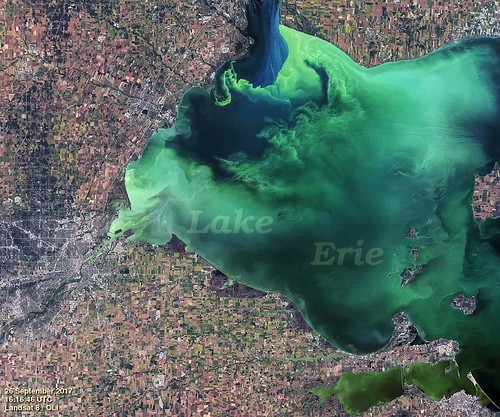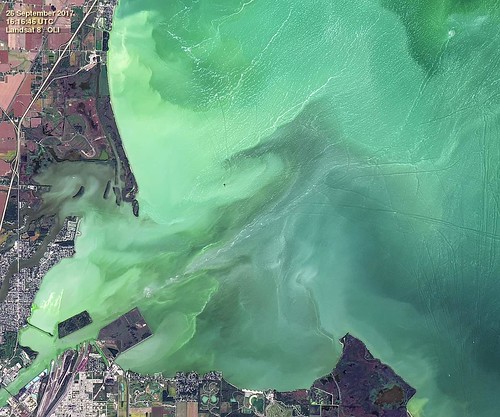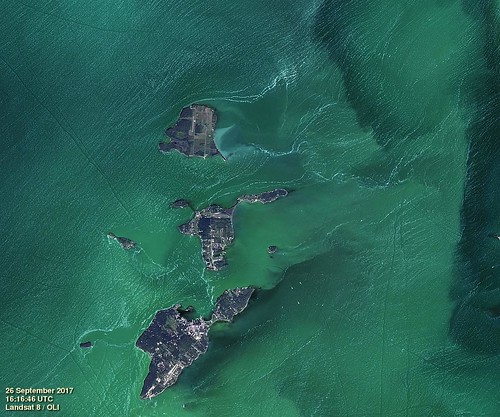Sep 28, 2017 tt post - stupid water panic and algae bloom info and photos
quote=214410
http://toledotalk.com/cgi-bin/tt.pl/article/214275/22Sep2017/Toledo_made_our_local_news
I would have never known about this week's bottled water panic if I had not seen this Toledo Talk thread. Thankfully, I'm oblivious to the popular trends on social media.
I checked Ryan Wichman's Twitter feed today for any algae bloom photos, which are quite artistic to me, and he posted a couple things, related to the bottle water stupidity. I didn't know that it was this silly.
https://twitter.com/Ryan_Wichman/status/913198954942169088
People, this is the epitome of a rumor. Heard it from a friend, who heard it from a friend, who knows someone important.
Wichman's tweet pointed to alleged Facebook posts that said:
Hi neighbors! So I know someone who knows someone who works for city of Toledo water plant, and they were told that the water will be declared undrinkable tomorrow.I work with a NP and her sister babysits for a city toledo water employee and that employee told her.
Another Wichman tweet:
https://twitter.com/Ryan_Wichman/status/913180179488546816
These false water crisis rumors are worse than a bread and milk run before a snowstorm!
That pointed to this tweet
https://twitter.com/koyote19/status/913149763629002759
Kroger Monroe St Sylvania.
Another user replied with the following, and I don't know if the person was joking or being serious.
The media caused this. Kinda like inducing panic..
WTF?
Another person replied with:
The water on the lake truly looks disgusting. I can't believe it's still OK to drink. Yuck!
Holy hell. That's what happens when people skip science class.
Yesterday's NY Times story about Twitter bots spreading misinformation was timely. But in our area, we don't need bots to ignite the spread. We have humans who can do it well.
Excerpts from a Sep 28, 2017 Toledo Blade story that should be shared on social media:
... the National Oceanic and Atmospheric Administration said the toxin concentration remains low in most areas. That’s true where it matters most — intake cribs that send raw lake water to several municipal water-treatment plants.According to area water-treatment plant operators, the toxin concentration remains surprisingly low.
Scientists have long said the size of a bloom does not correlate to its toxicity.
At Toledo’s intake crib, three miles north of the Lake Erie shoreline, toxin concentrations over the past week have been among the lowest all season.
Records provided by Janet Schroeder, a city water department spokesman, show the highest concentration in the raw water near Toledo’s intake was a mere 1.24 parts per billion last Friday, easily within the water plant’s ability to treat it.
The needle on the city’s water quality dashboard doesn’t even get moved into the Watch category until the raw lake water is over 5 ppb, and several area operators have said it can get as high as 50 ppb before treatment can become problematic.
The numbers after Friday were this: 0.68 ppb on Saturday; 0.78 ppb on Sunday; 0.31 ppb on Monday; 0.42 on Tuesday, and 0.52 ppb on Wednesday. Those numbers are so low they’re barely detectable.
“It certainly look as bad or worse as it's been in recent years,” Ottawa County Sanitary Engineer Kelly Frey, who monitors Port Clinton’s intake, said.
He said the highest reading out there this summer has been 3.4 ppb. “In past years, we’ve had over 50 ppb,” Mr. Frey said. “It’s not as bad as it looks.”
Doug Wagner, Oregon water-treatment plant manager, said Wednesday’s test result near that city’s intake was so low microcystins were undetectable. Last week, it was 1.7 ppb. Prior to that it was 4 ppb. The highest it has gotten this summer for Oregon so far is 25 ppb, Mr. Wagner said.
He agreed the toxin is “relatively mild” given the size and appearance of the bloom.
The Toledo-Lucas County Health Department has said the recreational contact advisory it placed along the Maumee River in Toledo was based on aesthetics, not excessive toxin.
Water-treatment plant operators will continue to be on the lookout until the threat has subsided, despite the so far surprisingly low toxin concentrations.
The blooms are expected to stick around until mid- to late-October.
Here's some interesting information from the Blade story:
Most probably are unaware of the fact that scientists, through environmental DNA evidence, know that what forms in the Maumee River and western Lake Erie each summer are genetically two different blooms that have little or no cross-over.
That fascinating trivia, however, doesn't help with this:
... residents have been shocked for days in person and on the Internet by the sight of an emerald green, thick-as-paint algae that has overtaken the Maumee River between downtown Toledo and Point Place. Some may have taken in whiffs of its fetid, foul-as-sewage odor along the shoreline.
Sep 26, 2017 photos.
https://twitter.com/EddieGreatLakes/status/913358254369071104
Shades of green.
https://en.wikipedia.org/wiki/Shades_of_green
![]()
Viridian, sap, emerald, mint, etc.


The islands.

Another Toledo Aerial Media video published Sep 24, 2017 with cool music.
https://twitter.com/TOLAerialMedia/status/913198627803328512
From JR's : articles
803 words - 5311 chars
- 4 min read
created on
updated on
- #
source
- versions
